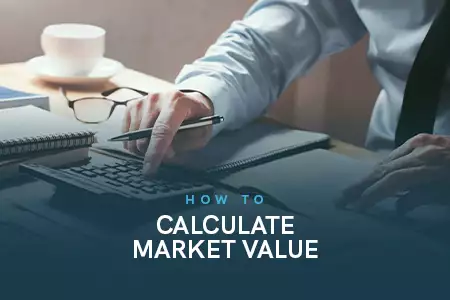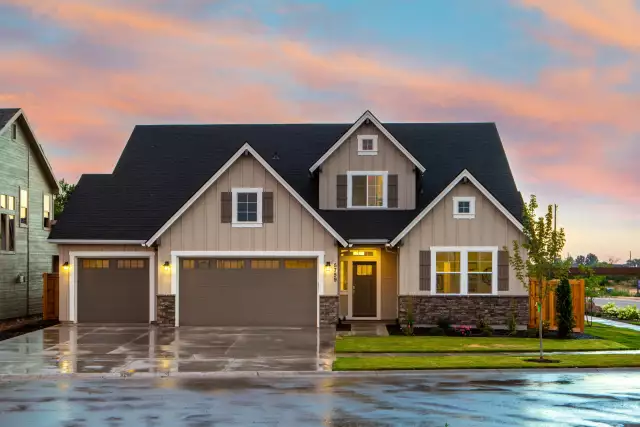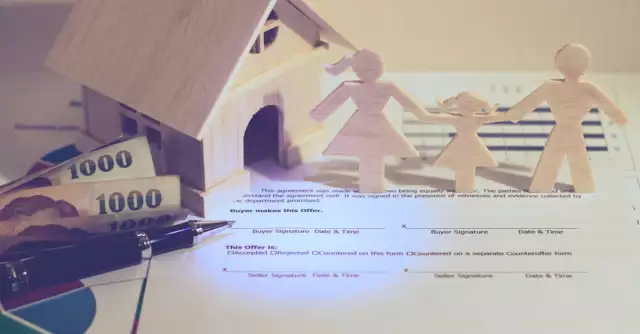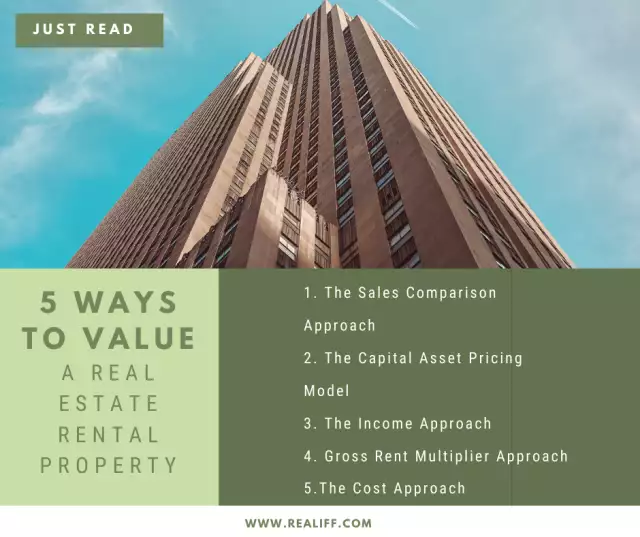How to Calculate Market Value of Property in 2023?
When a real estatehome market fails, there are so many foreclosure and bank REO transactions, finding out the genuine worth of a property may be challenging. When there is a high supply of properties available for sale in the housing market, it may be tough to identify the genuine worth of a single home.
In a market with a large number of properties for sale, competition among sellers may drive down prices, making it difficult to assess what a property is worth based on current market circumstances. Additionally, there may be a large variety of properties available, with varied sizes, locations, and characteristics, making it tough to compare properties and evaluate the genuine worth of a single property.
As a consequence, it may be difficult to assess the true worth of a house in a housing market when there are numerous properties for sale. The comparable sales approach is the most often used — and still the most accurate one — to evaluate the value of single-family houses, condos, and smaller multi-unit properties (two to four units) (two to four units).
How to Find Property Value Online
Start by studying information on sold houses on your local government websites for your intended area. Many tax assessor's offices and county courthouses provide searchable internet databases that enable you to examine the prices for properties within a certain region. They frequently offer detailed data about the properties, including square footage. Plus, subscription websites such as Electronic Appraiser (www.electronicappraiser.com) provide you with precise information, especially in places where internet data is sparse.
Free websites such as Zillow (www.zillow.com) also give property data, although the information is less extensive than the subscription services. For example, the seller's name may be omitted, which may be crucial if the seller was a bank, as in the event of a foreclosure sale. If that's the case, it can't be called a comparable transaction since the property was sold in distress.
Be wary about utilizing websites that give a computer-generated value. These are termed automated valuation models (AVMs), which combine sales data from similar properties to establish an estimated price. While AVMs may be a standard for judging value, they can be inaccurate by as much as 10% or more. With a little investigation, you can determine the figure to be as near as 3 to 5% percent.
The most effective computer database for gathering information about similar houses is the local MLS. This database indicates the number of days on market and contains comments that indicate if the property was updated, whether the seller made concessions on the sale, and so on. This extra data is often not available via other sources, so finding a real estate agent or appraiser to aid you will be vital since most MLS systems aren't accessible to the general public.
While numerous elements come into play when you're analyzing a residential property's worth by “comps” (similar sales), the three important considerations are location, the size (square footage) of the house, and the number of bedrooms and bathrooms. Obviously, you'll need to look at many other elements before you can estimate the actual worth of a property, but these are the “big three”. You should be able to look through comparable transactions involving houses with these three qualities and get a fair notion of the worth of the property you're selling
Location
Locationis incredibly crucial when you're comparing sold houses. A professional appraiser often looks at properties within a one-mile radius or fewer, and so should you. In the case of a subdivision — if the homes are all identical and constructed in the same time period — you need to compare similar buildings with similar styles in the same subdivision to achieve an appropriate appraisal.
If there's a large mix of houses in the development, you may need to venture outside of it to acquire comparable sales. Just be cautious with “dividing lines”. Geographic borders such as opposing sides of the river, the park, or a significant highway might be invisible separating lines that place the property in another school district and may not get appropriate comps.
Square Footage
When establishing a home's worth, be careful to analyze the square footage. Note that appraisers often look at properties that are within 20% up or down in square footage as comparables. Generally (particularly within a development), most houses fall within a very narrow size range. Therefore, you should be able to create a decent feel for the selling price of houses in those precise sizes.
Of course, not every square footage is made equal. Most people assume that if a home has 1,000 square feet and is worth $100,000, then the 1,100 square-foot house next door would be worth $110,000. Wrong! The additional 10% in square footage equates to a few percentage points in value.
If these two properties have the same location, style, and number of bedrooms and bathrooms, the 10% greater square footage won't impact the worth substantially. Why? Because there is a set cost on a home depending on the value of the land, cost of building, sewage, subdivision plans, and other things. An additional few hundred feet of space entails very little expense – mainly wood, nails, carpet, and probably some modest electricity and plumbing charges.
Rooms
The number of bathrooms and bedrooms is more significant than merely the sheer square footage. In other words, a three-bedroom house with 1,200 square feet may be valued more than a two-bedroom property with 1,250 square feet. It also depends on where the bedrooms and baths are placed - on the main level or the basement.
While completed basements may add value, the quantity of that value is smaller than it is for above-ground living spaces. Plus, this substantially changes based on various locations of the nation. In humid places, below-ground living space isn't as important to homeowners as in drier sections of the nation.
To assess a home's worth using comps, also look at the quality and quantity of bedrooms and bathrooms. Three-bedroom houses are normally a major bonus over two-bedroom homes, but four or five-bedroom homes don't contribute as much over a three-bedroom if they are around the same size in square footage. Likewise, two bathrooms are a substantial bonus over one bathroom, but three or more don't provide as much value.
When comparing bathrooms, make sure you understand the various kinds of bathrooms and compare them accurately. A complete bathroom comprises a shower, bath, toilet, and basin. A three-quarter bath features a shower but no tub, including a toilet and basin. A half bath features a toilet and sink but no tub or shower.
A three-quarter- or full-bath generates nearly the same value, especially if another bathroom in the property contains a tub. A half bath has little value unless there are enough additional bathrooms in the home. Also, a five-piece bath (separate shower and tub) probably wouldn't provide more value than a conventional full bathroom with a combined shower and tub.
Other Factors
There are additional elements to consider that impact the value of a property, but typically, you’d give this less weight than the location, size, and number of bedrooms and bathrooms. Others residences have one-car or two-car garages, some have carports and some have neither. The garage factors in some value, depending on the rest of the neighborhood.
For example, if the surrounding comps all have two-car garages, this might reduce the value by as much as 10% on the subject property if it only has a one-car garage or no garage. However, if the homes are all tiny and there's a variety of garage possibilities, the garage won't be as big of a problem.
Likewise, a four-car garage in a three-car garage neighborhood probably won't count for much either. One exception is with condominium projects. Parking spaces or garages are typically sold with condos and may have great value, especially in major cities where parking is confined to the street.
In addition to looking at houses sold in your chosen location, you need to look at properties that are for sale. While asking prices are not sold prices, it will give you a sense of where your local market is moving — up or down. Also, bear in mind that if your aim is to flip the home, the houses for sale are your direct competitors, and therefore the asking prices are quite significant.
For example, if you locate houses that have sold for $150,000 but the current inventory on the market is listed at $140,000, the asking prices of your competitors become just as crucial, if not more, than the sold prices of other homes.
If you consistently invest in the same neighborhood, spend some time to construct yourself a “due diligence” notebook of homes that have sold, are under contract, and are for sale within your region. Have your realtor check the MLS every week for new listings and sold homes so that your information is continuously up to date. Remember, you are only as good as your data, and the more information you have, the more accurate your results will be!
It's vital to realize that no one approach is ideal and that multiple procedures may result in different values. A professional appraiser or real estate agent may assist to estimate the most accurate market value by evaluating several methodologies and aspects such as location, size, condition, and current market trends. Additionally, having a professional assessment is typically necessary when obtaining a loan or selling a property.








